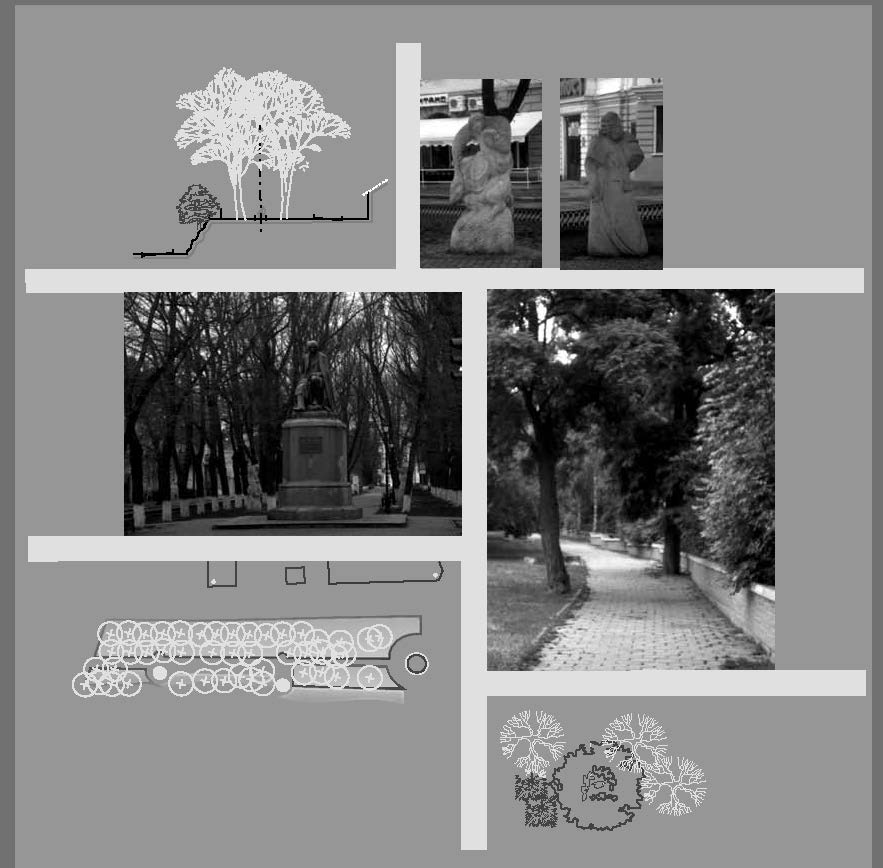FORMULATION OF THE PROBLEMLinear landscaping structures occupy a special position among the range of urban green areas. Running through particular parts of the city, they form relatively narrow but elongated strips of urban greenery. This scheme of planning provides the residents of the neighborhoods with a brief daily recreation, gathering them in the local areas, attracting them to urban public facilities or parks and coastal zones. Today, these places not only constitute urban interior spaces, but also serve as a platform for environmental experiments related to the integration of natural elements, or even the testing of technological innovations. The spatial organization of cities has studied by a number of authorities; particularly noteworthy are the works of K. Lynch, R. Venturi, A. Brinkmann, V. Shymko, B. Hlazychev and others. The results of the studying architectural composition and aesthetic features of separate structural components (including linear pedestrian zones or narrower walkways) have beeen highlighted in the theoretical writings of C. Sitte D. Brooks, A. Verhunov, M. Belov, V. Petrov and others. Contemporary studies are aimed at the organization of the object-spatial environment of linear green spaces, based on a “total synthesis” of design with different kinds of design and artistic activities – architecture, urban design, landscape and graphic design, monumental and decorative art. The landscape of the urban environment is addressed in the works of J. Simonds L. Verhunova, A. Mikulina, L. Zaleska, I. Rodichkina, A. Belkin, V. Kucheryavyi, N. Kryzhanovska and others. Further information about these objects is partially covered in online resources, or journals such as Proektinternational, and Landscape Design.LINEAR SPACES IN THE CITY STRUCTUREOrganizing harmonious comfortable spaces in the structure of dense modern cities, or creating conditions for public recreation in a polis, are important issues nowadays, whether for architects, urban planners, or urban and landscape designers, or in fact for ordinary citizens. The place of the human individual in these spaces changes over time, as do the physical parameters and the ideas about the convenience of object-space environment. Today, with technology an increasing force in our lives, we can see the attraction of new comfortable urban spaces, such as free public space, that were popular within Europe in the postwar period. …
the-boulevard-as-a-type-of-urban-linear-space
